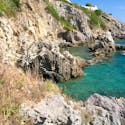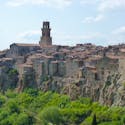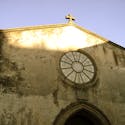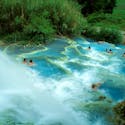Town Walls, Fortress & Festivals of Southern Tuscany
An adventure starting close to the coastal town of Grosseto, and heading towards the center of the peninsula of Italy, running along the border between Lazio and Tuscany, this itinerary into the Maremma and Montecucco will reward you with surprising sceneries, small towns, delicious vineyards and an journey in a secret slice of Tuscany.

These virtually unknown 10 stops within the heart of the Maremma are found on small back roads to be explored coming or going to Rome or heading out to the coast, encompassing wine roads, national reserves and pieces of Tuscan history that remain obscure yet fundamental to all that makes up the Tuscany you know today.
This itinerary snakes its way across southern Tuscany and the Maremma towards the Val di Chiana. Following parts of the Strada del Vino Montecucco e dei Sapori d'Amiata (Wine Road of Montecucco) and delving into a scenery of volcanic mounts, mineral mining, hot springs, and hilltop fortresses.
1 - Abbadia San Salvatore
The Abbey of San Salvatore is a Benedictine complex, dating as far back as 762. Later handed over to the Cistercians, the abbey played an important regional role, and was often in conflict with the ruling Aldobrandeschi and Orsini families, as well as other allies of the Holy Roman Emperors. The abbey flourished in the period from X to XII century and in 1782 it was suppressed and reduced to a mere parish.

The church is perhaps one of the more important structures, dating back to 1035, flanked by two towers, in front of a large square with a fountain and a cafè for a coffee or something refreshing under the Tuscan sun. The interior, a Latin cross, houses a crypt which is home to thirty-two columns with delicately carved capitals, both columns and capitals are decorated with a different motif. There is a requested 2 Euro donation to view the spectacularly lit crypt - and it is perhaps the most serene and illuminating atmosphere.
The Abbey once hosted the Codex Amiatinus, the earliest surviving manuscript of the complete Latin Vulgate version of the Catholic Bible, for almost a thousand years. www.abbaziasansalvatore.it
In the year 833, three copies of the Bible were commissioned and painstaking hand copied. One copy was intended as a gift to Pope Gregory II, but the book found residence in the 9th century in Abbey of the Saviour near Monte Amiata (hence the description "Amiatinus"), where it remained until 1786 when it passed to the Laurentian Library in Florence.
Once you have visited the church, you can follow slip under the stone archway and follow the signs to the middle city center, where the streets are virtually the same as the were hundreds of years ago.
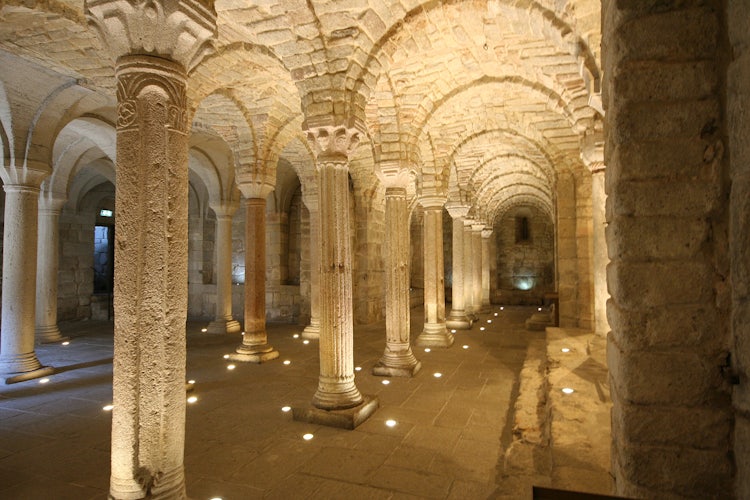
Museo Minerario
When the Abbey began to lose its importance in the area, it was the mining that helped resurrect the town. The mining museum encompasses much of the original structure and it will amaze you with its size. Divided into three distinct areas, most of it is in Italian - but the mini train ride into one of the mines also has an audio tape in four languages. There is a fascinating multimedia center and the last part makes the mines come alive showing you the various steps in mining mercury.
There is a ticket and it is open every day. The train ride is available for limited numbers and a reservation is necessary but worth it!
Official Website
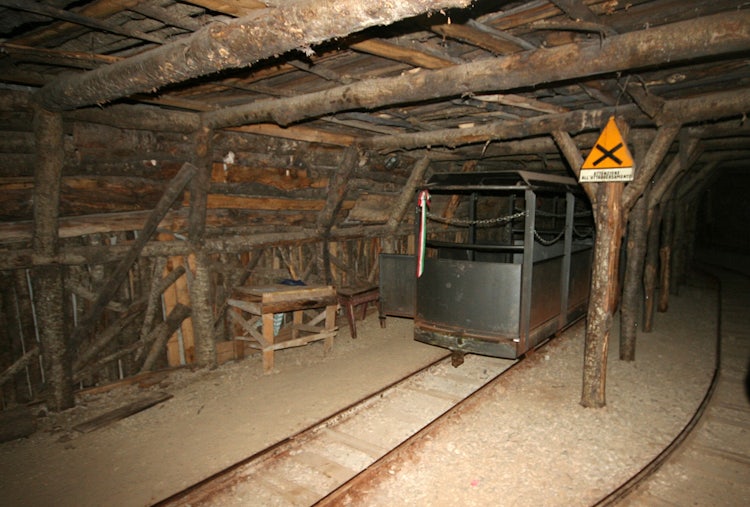
2 - Campagnatico
Situated the furthest from the Abbey, the town of Campagnatico has a written recorded history of over a thousand years (documented as far back as the year 973). Yet t actually goes back much further with a fossil remains from more than 4.5 million years ago. There are also numerous sites of great archaeological significance, which testify to long permanence of the Etruscan and Romans who once dominated this area.
What you see today as you visit this small town are the walls of Campagnatico, built between the 12th and 13th centuries, and the fortified complex of the Aldobrandesca fortress, dominating the entire center, and a watchtower, later transformed into the bell tower of the church of San Giovanni Battista, built in the mid-13th century in Romanesque-Gothic style.

Traditionally they were Ghibellines. After the death of Emperor Frederick II of Swabia in 1250, the Aldobrandeschi, of the branch of the County of Sovana, passed, for political opportunity, to the Guelph camp. This did not, however, prevent both branches, subjecting to Siena in 1331. The family’s last heir married into the Sforza family taking with her an immense patrimony.
Noteworthy is the church Chiesa di Santa Maria della Misericordia, from around 1188, it is believed that it is built on a pre-existing convent. A visit will reveal interesting frescoes from the 13th & 14th centuries.
Just south of the town you will find the Pieve Vecchia, near the Ombrone River, built around the year 1000, reusing the cistern of an ancient Roman villa. Or you could take a side trip to Montorsaio, where you will see a fine example of the Cassero Senese, a common architectural structure which was constructed as the last defense to the many fortifications in this area.
Gli Albori
If you are curious about the beginning of man you can stop in and visit their prehistoric village with sample constructions from across time. The inhabited palaeos have been rebuilt respecting as much as possible examples found in various archaeological digs throughout Italy from the period between the Bronze Age and the Early Iron Age
Official Website

3 - Paganico
Siena decided in 1262 to construct Paganico as a "borgo franco", a medieval community free from duties or tax privileges, and by adding strong walls, making it one of the most important fortified outpost along the southern boundaries of the republic. This lively town has preserved part of its medieval wall, with a rectangular plan, several towers and two “doors” or openings still visible: Porta Grossetana or Porta Franca; in the direction of Siena there is the most impressive “Porta Senese “or Cassero Senese dominated by a tall tower.
The Church of St Michael Archangel, built in the 13th-14th centuries, houses a series of 14th-century frescoes (1368), attributed to the Sienese painter Biagio di Goro Ghezzi, and dates back to the foundation of the village. You will note that it was transformed into an example baroque architecture and then was heavily restored in 1933. In addition, there is the Palazzo Pretorio, from the XIV century and the Palazzo del Vecchio Ospedale, from the XIII century.
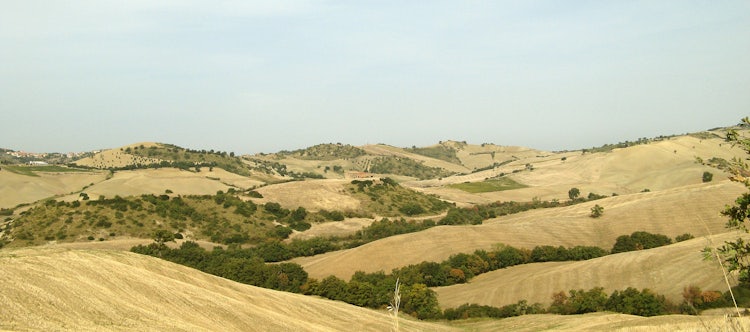
4 - Cinigiano
Established around a magnificent 12th century castle, the town of Cinigiano boasts the best of “mare e monti” (the sea and the mountains) even though it doesn’t reside near one or in the other. The cool ocean breezes that arrive from the Tyrrhenian sea and the lush green landscape that seeps off of Mount Amiata nearby create an ideal atmosphere for good wine.
Founded and named after Bernardino di Cinigiano, a vassal of the powerful Aldobrandeschi counts, his descendants ruled the town up until Siena took it by force. The new rulers enforced a strict regime and the locals rebelled. Eventually the town came under control of Grosseto, until it was annexed by the Kingdom of Italy in 1859.
Save the Date for these Festivals
In October the town celebrates the “Festa dll’Uva” with a parade and allegorical floats (style Carnival in Viareggio). Another event to visit is the “Calici di Stelle” (wine goblet of stars) where the town's traditional cantinas that are made of stone are opened for wine tasting of the famous Montecucco DOC wines. (link to satori)
Museo Etnografico Casa Museo (Monticello Amiata)
It started as a collection documenting the harvest of the chestnut, an important element in the life and economy of the area, and has now broadened its scope to cover everyday life and work in the high hill country at the end of the nineteenth century. Museum Website Page

Natural Reserve Poggio all’Olmo
Over 400 hectares of protected park land between Cinigiano and Arcidosso with paths for hiking and biking. The Reserve is bordered by an affluent of the Orcia river, and extends around the hills of Poggio all'Olmo (1,018 meters), Poggio Materaio (939 meters) and Poggio la Torretta (854 meters).
5 - Montenero d’Orcia
The territory of Montenero is thought to have been inhabited by man since prehistoric times with the find of stone artefacts from about 50,000 years ago together with other archaeological finds such as the Etruscan necropolis dating back to III-II century B.C. But as we see the city plan today, Montenero appears for the first time in 903 on a bill of sale to the Abbot Petrone, with the name “Casale Munteniru”, and then as “Castle of Monte Niro” in 1015, where it appears to be owned by the abbey of San Salvatore.
The town walls and fortifications have surrounded the village since the 10th century. They were modified several times until the 13th century, completely enclosed the village of Montenero d'Orcia. The best preserved part of the walls is, without doubt, the one that includes the double door to the village, consisting of characteristic round arches. Worthy of a visit is the Pieve di Santa Lucia (12th century), main parish church of the village, where you will find a wooden Crucifix by Ambrogio Lorenzetti, the same artist who left his mark in Siena and the fresco of the Good government.
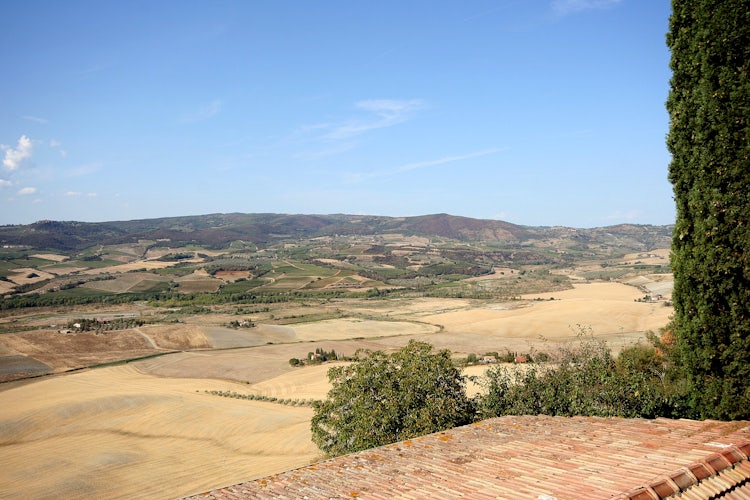
Food, Festivals & Wine
The main square hosts a museum which focuses on local history about the tradition of grape growing and wine production in Montenero as well as olive oil production and chestnuts, which plan a large part in the economy of the area. And you don't want to miss out on the main sagra which takes place at the end of May and the beginning of June, where not only do they celebrate the local flavors in the form of “lasagna” - homemade pasta and meat sauce cooked in the oven - but also with the Pintata del Rotolo - where the different sections of the town compete against each other rolling the great round bales of hay through the town streets.
6 - Seggiano
Historically, the center was built at the beginning of the 10th century, as a possession of the Abbey of San Salvatore, which later ceded part of the rights to the Abbey of Sant'Antimo near Montalcino. The medieval origins are still evident, embedded in the exterior walls of some buildings and the city walls. Take a tour to find the three doors that allow access to the medieval village: the Porta di San Gervasio, Porta di Azzolini and Porta di Mercato.
The St. Bartholomew's Church, built in the 13th century and restored several times in successive ages, has three aisles and preserves a 14th-century polyptych and frescoes from the 16th century.

Flavors of Seggiano
Early summer promises a special treat with the Festa della Ciliegia (Cherries) and in December join the town as they celebrate “Olearie” and the new extra virgin olive oil for which they are famous throughout not just Tuscany but all of Italy.
Garden of Daniel Spoerri
Not a name of chance, the use of “Garden “refers to the historical name of the area on the local government maps: “Il Paradiso”, or in English - “Garden of Eden”. This amazing area is spread out on approximately 16 ha and the green garden hosts over 100 of contemporary pieces art by more than 50 artists. Open to the public from Easter till October (closed on Mondays) see website for more details.
Offical Website
7 - Arcidosso
Arcidosso, mentioned for the first time in a document dated March 4, 860 as a property of San Salvatore, probably derives from the Latin nouns “arx” and “dossum”, meaning respectively: strength and hill. The castle was built probably around the year 860, thus Arcidosso is said to have the oldest state building in Italy and one of the oldest in Europe! Many believe that its construction, by the Aldobrandeschi family, was on top of a pre-existing Lombardy building. Follow the via Scaletta, just inside the main door (Porta di Castello) and you will find yourself at the top of the city and in front of this impressive fortress and some spectacular views of the Montecucco landscape.
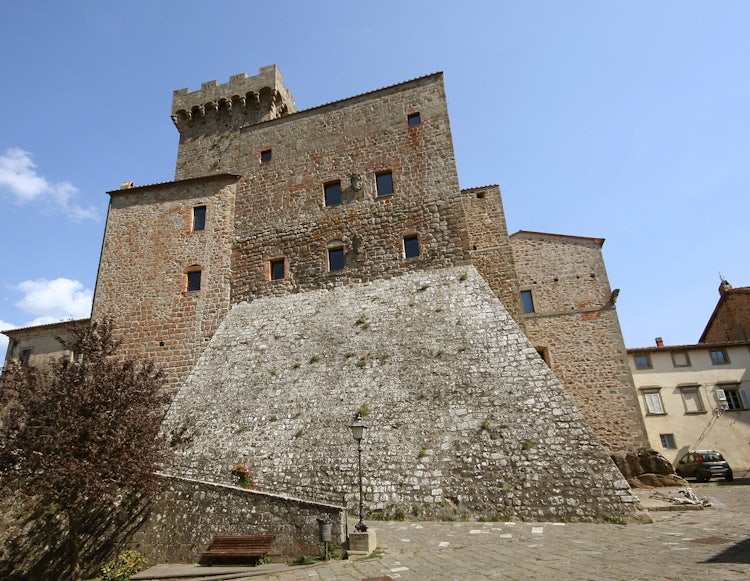
As with many of the towns in this area, it posses a magnificent wall. The first set of walls of the town has two doorways or entrances: the Porta di Castello, located along Via Cavour and the Porta di Mezzo, also called Porta di Orologio after it was restored in the mid 1800’s. The second set of walls conserves the Porta di Talassese, with its original arches and is quite magnificent.
Among the places to visit you can stop at the Chiesa di San Niccolò, first documented in 1144, and one of the oldest churches in the town of Arcidosso and a stop a the church of Sant'Andrea, located near the Porta Talassese, which dates back before the year 1188. For those of you who are a bit hungry, this little town has several restaurants with intriguing menus: L'Ora del Giotto Enoteca (11:30am-3pm and 6pm-9:30pm) a menu that ranges from just snacks to a full meal - and they always have local wine for you to taste including a Brunello, Vino Nobile and of course Montecucco DOC.
Pieve di Santa Maria a Lamula
The bell tower is visible from the road as you descend Arcidosso towards Seggiano and Montenero, it peaks out from the forest trees and calls you to stop and explore. Along the road you will note a brown and white sign for the Pieve, from here it is a 300 meter hike (almost all uphill); the first part is the most steep, once you have climbed the first 50 - 75 meters it evens out for a fantastic up close view of this wonderful landscape.This important parish church was first documented in the year 853 where a parchment indicates Emperor Lothar II confirms his property at the Abbey of San Salvatore at Mount Amiata. Santa Maria a Lamula originated as a branch, of the Abbey of San Salvatore in the beginning of the 9th century, deemed necessary since the area was particularly rich in natural resources. The name supposedly comes from a mule (la mula) that stopped and knelt at the front door of the Pieve in adoration of the Blessed Mother...the imprint of the the mule's knees are still visible at the entrance!
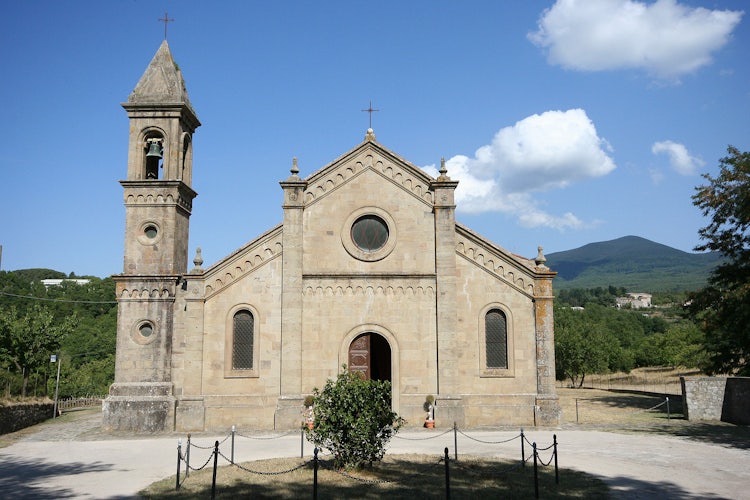
Merigar West
Another religious site in the area which call attention is the Tibetan sacred building located on Mount Labbro, founded by Namkhai Norbu in 1981. Merigar literally means “home of the mountain of fire” symbolically “energy house”; It is a place surrounded by nature, by forests of beech and chestnut trees creating a relaxing place for retreats and meditation. The gompa - temple of great contemplation - was built in 1990.
8 - Santa Fiora
This town was first nominated in a parchment dated 27 June 833; establishing Santa Fiora as an important base for the Aldobrandeschi family. As you walk around the town you will note “La Peschiera di Santa Fiora” located just after crossing the San Michele Gate, a splendid park-garden built by the Sforza counts, where there once existed a trout nursery in medieval times and where the spring waters of Fiora river are collected. The waters that flowed out of the park once fueled industrial workers and mills.There is also the Church of the Madonna delle Nevi, within which frescoes by Francesco Nasini (1640) have recently been restored and below the church floors runs a vein of the River Fiora.
Santa Fiora also boasts an impressive and significant collection of della Robbia (a noted Florentine master of ceramic artwork). Originally the ceramic masterpieces, commissioned by Count Guido Sforza, decorated the private chapel of the counts of Santa Fiora. They definitely merit a visit.

Museum of Mercury Mines of Mount Amiata
The Mercury Mining Museum is located on the ground floor of Palazzo Sforza Cesarini, in Piazza Garibaldi, in the areas that once housed the kitchens and service rooms of the noble owners. The palace was built around 1575 in the place where the original Aldobrandesca fortress of Santa Fiora stood, and is characterized by stone wall structures, where rectangular windows open, and on the ground floor a series of round arch doors. In the same building is also hosts the Commune.

9 - Roccalbegna
Se il Sasso scrocca, addio la Rocca
Translated: if the “Sasso” or rock falls down, you can say goodbye to the town of Roccalbegna. In fact, you can’t help but notice that this town is wedged in between two massive stone mounts which seem to reach for the wide Maremma sky.
Despite the intriguing rock formations, which hint at an ideal defensive location — the town actually extends almost entirely on the floor of the valley. As most other villages in the area, Roccalbegna was owned by the Aldobrandeschi family in the 13th century, before passing to under the rule of Siena at the end of the century, under whose jurisdiction it remained until the middle of the sixteenth century. With the fall of the Republic of Siena, it was given to the county of Santa Fiora. In the second half of the seventeenth century, the settlement passed to the Sienese family of the Bichi, remaining under their control until the late eighteenth century when it became a free commune of the Grand Duchy of Tuscany.
As you walk through the town, search out Chiesa dei Santi Pietro e Paolo whose altar received a little bit of embellishment with a gorgeous three panel work of the Madonna and Child, St. Peter and St. Paul, and parts of a dismembered altarpiece by Ambrogio Lorenzetti, which was made sometime in the 14th century. The wall was built during the 13th century by the Counts Aldobrandeschi and later by the Republic of Siena, which interfered with the perimeter with lookout towers, however if you are looking for the ancient entrance ways you will only find the Maremma Gate (Porta Maremma) facing south, and it is outside on the square of the Church of the Madonna del Soccorso.
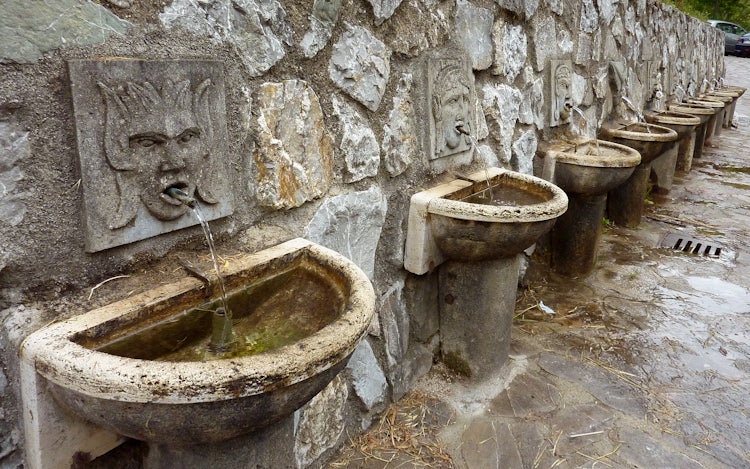
The fortification overlying the hamlet was a minor fortress, used essentially as a point of reference more than a defensive structure; it constituted the defensive system of the center of Roccalbegna along with the Aldobrandesca fortress at the top of the other cliff. It was probably built at the beginning of the 13th century by Count Aldobrandeschi. However at the beginning of the fifteenth century, due to the loss of its strategic importance, it was eventually abandoned.
Also known as the Rocca Aldobrandesca, this fortress sits on the peak of one of the two cliffs that overlook Roccalbegna. It was built in the Middle Ages by the Aldobrandeschi as a defensive bastion and observation fort, and was almost impregnable thanks to its position on the cliff. The Aldobrandesca fortress, also called Il Sasso, is the main and most impressive fortification of the historic center of Roccalbegna. Its location is on the summit of the highest cliff overlooking the underlying inhabited area.
Castello di Triana
The place is remembered since 760 but the existence of the castle is attested only by the division of the goods of the Aldobrandeschi of 1216 when it was assigned to the branch of Santa Fiora. In 1388 Triana was purchased by the Sienese family of the Piccolomini, who made it the seat of a rural lordship during the sixteenth century.
Riserva Naturale Bosco dei Rocconi - oasis WWF
Bosco Rocconi Reserve covers an area of 371 hectares and is located in the valley of the village of Roccalbegna, on a portion of the reserve was established WWF Oasis. The territory is characterized by a wild environment with rocky walls, gorges dug into the rock, Mediterranean forests with centuries-old trees and some unexplored areas. It is crossed by two streams: the Rigo stream and the river Albegna. Extraordinary is the variety of spontaneous orchids (28 species!!).
WWF Website
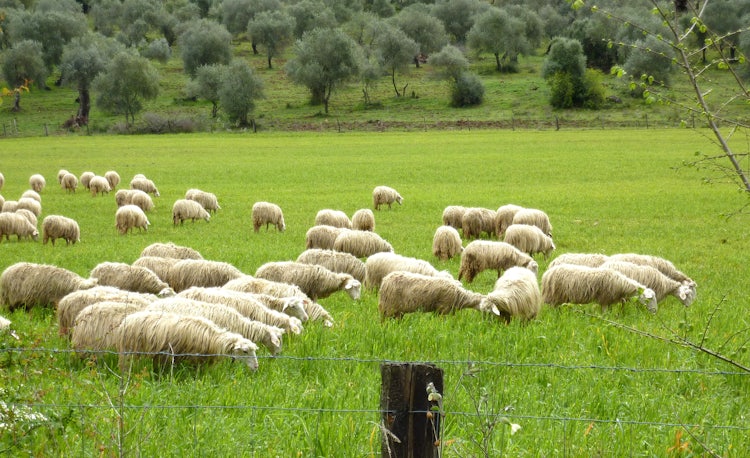
Focarazza di Santa Caterina and the Palio "dello Stollo"
A totally unique tradition, celebrating the martedom of Saint Catherine of Siena, who was burned at the stake in the early 4th century. Tradition has that a huge bonfire is set a flame on the 24 of November. The construction is set around a tall pole, called "stollo". Once the flames are reduced to smoldering embers, the Palio consists of a group taking the pole (stollo) and racing it through the city streets to the teams home base.
10 - Castell’Azzara
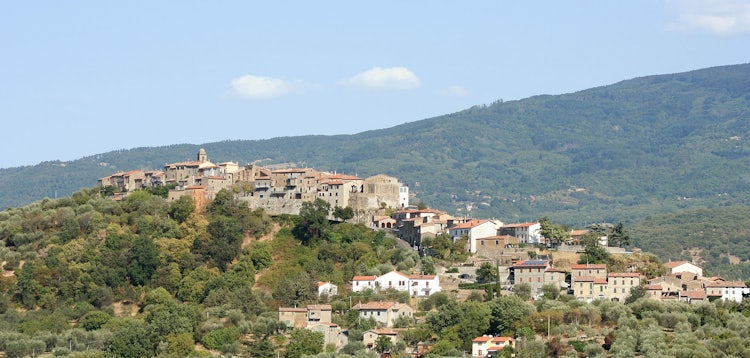
It occupies the slopes of the Monte Amiata and was once important for the extraction of cinnabar. It was first under the Aldobrandeschi, and then part of the Sforza County of Santa Fiora until 1624. It dates back to the 11th and 12th centuries, Castell'Azzara is remembered in 1216 as belonging to the Aldobrandesque Count of the branch of Santa Fiora and was always in the good of the neighboring cities of Siena and Orvieto.
In 1297 it became territory of the Orvietan family of the Basques, until it returned to the Aldobrandeschi until 1439, when it passed to the Sforza family following the marriage between Cecilia Aldobrandeschi and Bosio Sforza. Castell'Azzara then followed the fate of the nearby Santa Fiora, ending then annexed to the Grand Duchy of Tuscany in the seventeenth century.

